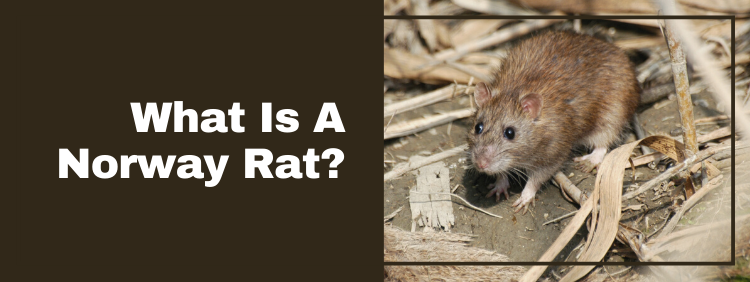
Despite its name, the Norway rat is not from Norway. Rather, Rattus norvegicus (as it is known to biologists) arrived in the Provinces aboard cargo ships arriving from the eastern Mediterranean, the Middle East and India starting almost three hundred years ago. Well into the 20th Century, about half of the freighters arriving at East Coast ports were infested. For better or worse, these creatures have thrived in Ontario, and that keeps homeowners, landlords and other property owners calling on Truly Nolen for rat control in Brampton. Although you may have heard of various ways to deal with infestations yourself, it is not a smart idea. Because of the dangers of disease and injury (brown rats are aggressive little buggers who will not hesitate to bite off a fingertip), it is best to have rat removal services carried out by trained, licensed professionals.
What Does a Norway Rat Look Like?
This species is also known as the ‘brown rat,’ along with a dozen other monikers. As the name suggests, they have brown and grey fur that is darker on the back. As size goes, the Norway rat is a heavyweight among muroids (the rodent family that includes mice, rats, hamsters, gerbils and moles). From the tip of its nose to the base of its tail, one of these critters can measure up to 30 centimetres and weigh half a kilo or more.
In addition to its larger size and colouring, a Norway rat can be distinguished by the length of its tail in relation to its body; unlike other rat species, their tails are shorter than the rest of them.
Where Do You Find Them?
Other nicknames for the Norway rat speak volumes about where they typically live: street rat, wharf rat, and sewer rat. This is why you should avoid handling these animals and call upon professional rat control in Brampton. Rats in general are territorial creatures, which is why they don’t hesitate to bite a creature a hundred times its size.
Domestically, the Norway rat can be lurking inside your walls, in little-used or hard-to-access spaces in the cellar or attic, a gardening shed or the garage.
How Do I Know I Have an Infestation?
Chances are you will hear it before you see it. Like Count Dracula, the Norway rat is a creature of the night. This is why they tend to live inside the walls of a building. They typically come out in the wee hours in order to forage for food. So, if you hear odd scratching noises and skittering sounds late at night, that is indicative of an infestation.
The next indication is olfactory; you will start to notice nasty odours, like old ammonia (urine) or sour, rotting meat (a rat has died inside your wall). You may be spared this if you have a pet cat or dog; they will notice it long before you do, so if they keep sniffing in some odd corner, pay attention.
Eventually, the visual cues show up: rat droppings in drawers and closets, holes gnawed in the wall and shredded paper, grass and hair used to make nests.
How Can I Prevent an Infestation?
Norway rats want two things: food and water. Therefore, the most effective way to keep them out is to deprive them of both by ensuring your home or building is sealed up tight. Unfortunately, Norway rats are cunning creatures and can sneak in through some of the most unlikely routes (the story about the rat emerging from a toilet is not a myth). When that happens, call upon control services from Truly Nolen, whose professionals use multiple up-to-date detection and removal as well as prevention services.
